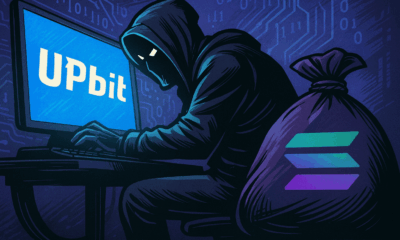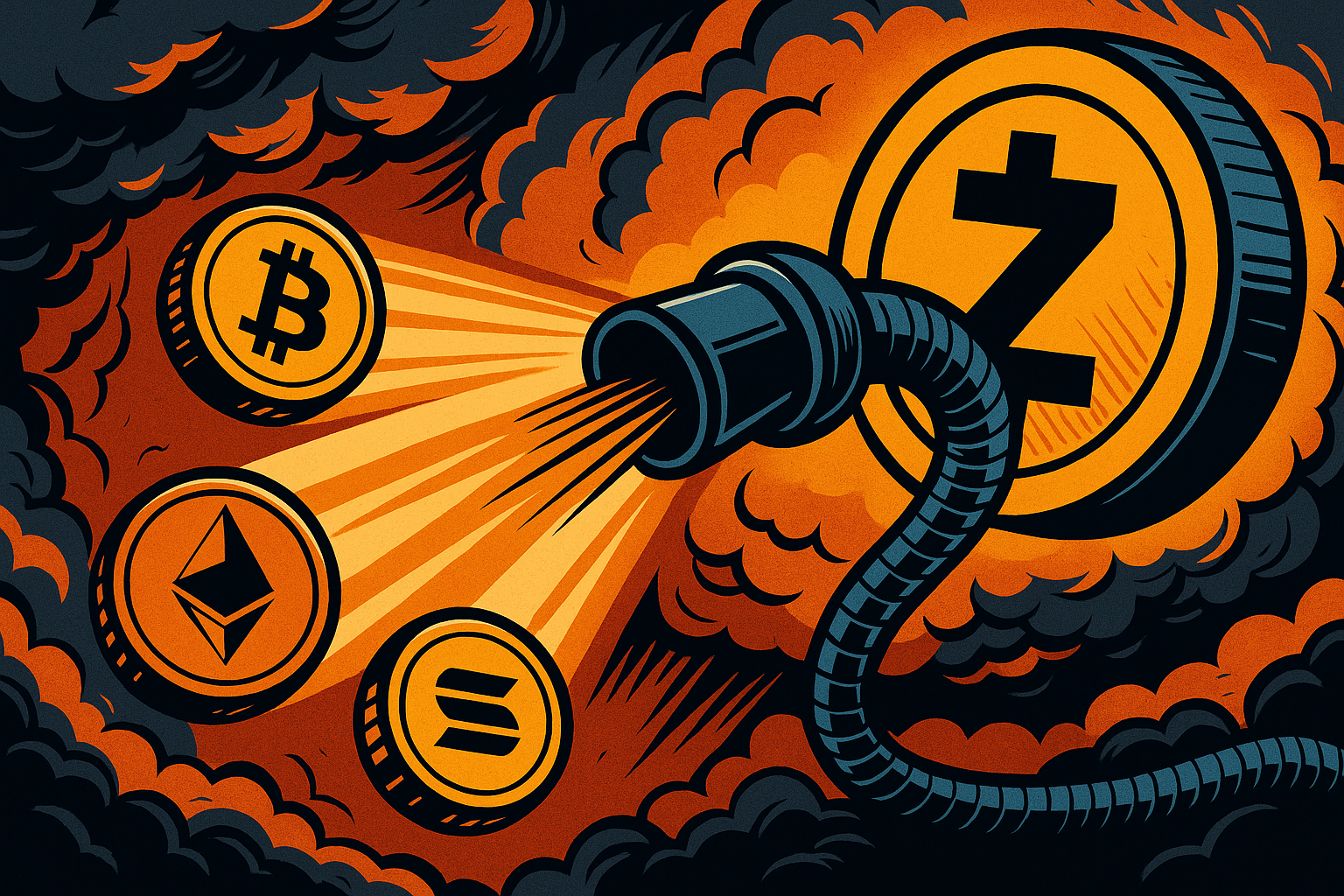Cardano
Solana co‑founder publicly backs Cardano — signaling rare cross‑chain respect after 2025 chain‑split recovery
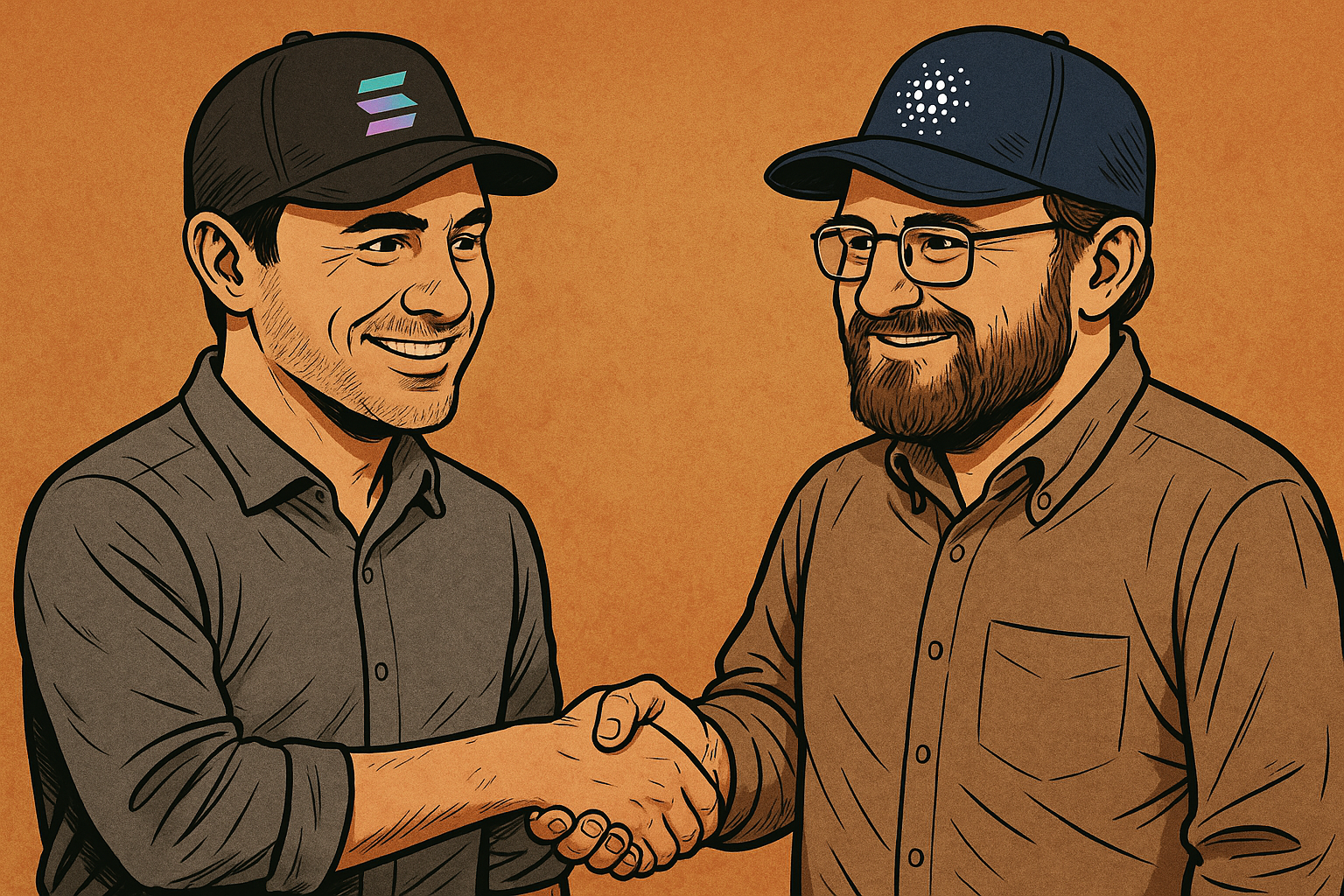
- Share
- Tweet /data/web/virtuals/383272/virtual/www/domains/theunhashed.com/wp-content/plugins/mvp-social-buttons/mvp-social-buttons.php on line 63
https://theunhashed.com/wp-content/uploads/2025/11/cardano_and_solana_charles-1000x600.png&description=Solana co‑founder publicly backs Cardano — signaling rare cross‑chain respect after 2025 chain‑split recovery', 'pinterestShare', 'width=750,height=350'); return false;" title="Pin This Post">
From Incident to Validation
In a development that surprised many in the blockchain world, Solana co-founder Anatoly Yakovenko publicly praised Cardano following its recent chain-split incident. What could have been a blow to Cardano’s reputation instead became an unexpected moment of validation — not just from within its own ecosystem, but from one of its most prominent rivals.
The Split That Wasn’t a Stop
On November 21, 2025, Cardano experienced a technical divergence caused by a malformed transaction. The issue stemmed from a bug in the serialization and deserialization logic of its node software — a deep protocol-level vulnerability. Some nodes processed the transaction as valid, while others rejected it, resulting in two competing forks of the blockchain running simultaneously.
But here’s the critical part: Cardano never stopped. The Ouroboros consensus mechanism kept producing blocks on both forks. And once the problem was identified, developers rapidly issued a patch. Stake pool operators upgraded their nodes in a matter of hours, and the network converged back onto a single canonical chain — no hard fork, no downtime, no loss of funds.
Yakovenko’s Unexpected Endorsement
Shortly after the incident, Solana’s Anatoly Yakovenko weighed in with a surprising take. He acknowledged that creating a Nakamoto-style consensus without relying on energy-intensive Proof-of-Work is “extremely hard to build” — and concluded that Cardano “actually nailed it.” He called the network’s recovery after the split “pretty cool.”
This kind of comment matters. It wasn’t just a technical compliment — it was a recognition from a competitor that Cardano’s foundational architecture, often criticized for being slow-moving or overly academic, delivered exactly what a blockchain is supposed to do: it kept running, adapted, and healed itself.
The Design Behind the Recovery
Cardano’s recovery didn’t happen by luck. It’s the product of years of research-first development: a layered architecture, formal verification, and the Ouroboros consensus engine designed specifically to prioritize security and resilience.
Most importantly, the resolution didn’t depend on a central authority stepping in. The “honest chain” prevailed through natural consensus. Operators coordinated globally without coercion. The update rollout was swift. The split was resolved without user impact beyond brief transaction slowdowns.
These are not small feats in a decentralized environment. They represent the kind of maturity that few chains — even large ones — have demonstrated under live pressure.
A Rare Signal in Crypto Culture
What makes this moment especially significant is that it cuts through the tribalism that usually defines blockchain communities. Yakovenko didn’t take a victory lap or criticize a competitor. Instead, he acknowledged a technical achievement — one that aligns, at least in spirit, with the broader mission of blockchain: decentralized systems that can withstand failure and continue operating trustlessly.
This is a sign that the blockchain space may be maturing. Cross-chain respect, while rare, is important. It suggests a shared understanding that competition shouldn’t come at the cost of ignoring good engineering when it happens — even on another protocol.
Reframing the Narrative Around Cardano
For Cardano, the incident — and the way it was handled — may redefine public perception. The network has long been portrayed as overly cautious, academic, or “too slow to ship.” But when put to the test, those same qualities may have enabled it to respond to a complex failure without chaos.
Cardano wasn’t flawless. But when failure came, it was recoverable. And that’s the real benchmark for a network that claims to be decentralized and secure. It didn’t just protect funds. It protected trust.
Final Thought
The blockchain space has seen its share of crises: bridges exploited, blockchains halted, forks forced under pressure. But Cardano’s chain split will likely be remembered not as a breakdown — but as a breakthrough. It showed that resilience in Proof-of-Stake is not only possible, but provable. And with respect coming even from Solana’s top leadership, it’s clear that Cardano’s architecture — often underestimated — is earning its place among the most battle-ready networks in the industry.
Cardano
Cardano Has Never Stopped — What the Chain Split Really Tells Us About Its Tech
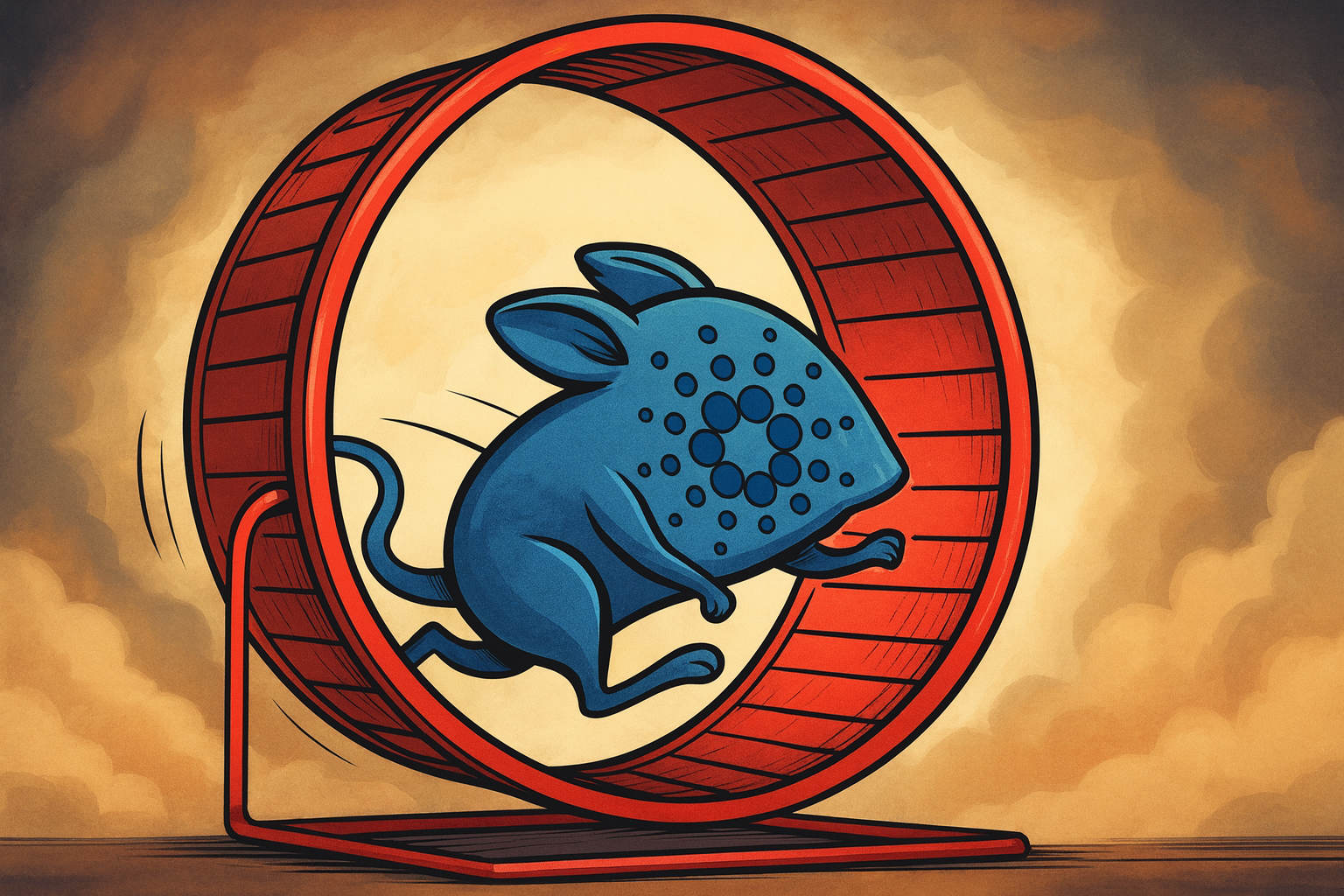
The Network Didn’t Fail. It Proved Itself.
On November 21, 2025, Cardano experienced what some feared might be a catastrophic event: a chain split. For about 14 hours, parts of the network diverged, with two versions of the blockchain running in parallel. But despite the panic and technical confusion, the result was clear—Cardano didn’t stop. The chain kept producing blocks, the network kept running, and the community coordinated a fix in real time. Far from exposing a flaw, the incident demonstrated just how solid Cardano’s architecture really is.
What Actually Happened: A Bug Meets an Edge Case
The chain split began when a malformed delegation transaction—created by an operator using AI-generated code—triggered a rarely encountered bug. The bug, which had been dormant in Cardano’s core software library since 2022, involved a discrepancy in how nodes processed transaction data during serialization and deserialization.
When this malformed transaction entered the network, some nodes interpreted it as valid while others rejected it. As a result, certain stake pool operators began building blocks on a forked version of the chain. This led to a temporary split: two incompatible chains running simultaneously.
Crucially, this was not a network halt. Cardano’s Ouroboros consensus algorithm continued to function. Blocks were still produced. Most users didn’t even notice the split until infrastructure like explorers, wallets, and exchanges began reporting inconsistencies. Transaction delays increased and around 3.3% of pending transactions were lost in the fork that was eventually discarded—but the underlying blockchain logic kept moving forward.
How Cardano Healed Itself
The recovery process was swift and decentralized. Core developers issued a patch to reject the malformed transaction type. Stake pool operators across the world upgraded quickly, voluntarily aligning with the correct version of the chain. No hard fork was required. No rollback or centralized intervention was needed. The protocol and the people around it did exactly what they were designed to do.
This recovery wasn’t just about code—it was about coordination. Cardano’s structure relies on a globally distributed group of node operators who can act independently but coherently. In this case, their rapid consensus allowed the network to self-correct in less than a day.
Why This Makes Cardano Stronger
Resilient systems aren’t the ones that never break. They’re the ones that recover quickly and accurately when they do. That’s exactly what happened here. Cardano faced a serious test, and it passed with its ledger intact and its community mobilized.
Rather than damage confidence, the event served as a validation of Cardano’s layered design and governance philosophy. It showed that even rare and difficult-to-detect bugs can be addressed within the existing framework. It also demonstrated that decentralization, when well organized, can outperform centralized systems in resilience.
Interestingly, even competitors took notice. The CEO of Solana—often seen as Cardano’s rival—publicly praised Cardano’s approach, acknowledging its strength in areas like formal verification and decentralized recovery. Such recognition from outside the ecosystem adds weight to the idea that Cardano’s fundamentals remain among the most robust in the space.
What It Means for Developers, Users, and Investors
For developers, the incident highlights the importance of safety in smart contract deployment. It also underscores the value of Cardano’s conservative, peer-reviewed approach to protocol changes. While some may criticize its pace, the trade-off for stability and recoverability is now clearer than ever.
For users, the key takeaway is trust. The network didn’t stop. Their funds remained safe. Their transactions, for the most part, were processed normally. And even when things went wrong, the fix didn’t rely on centralized authority—it relied on code and cooperation.
For investors, it signals maturity. Cardano didn’t implode. It didn’t require emergency governance. It didn’t pause block production. It endured, adapted, and continued. That’s more than can be said for many other blockchains in moments of crisis.
Final Word: Recovery Is Strength
Cardano’s chain split wasn’t a failure. It was a demonstration. It showed that robust protocol design, backed by a coordinated global community, can overcome unforeseen problems without permanent damage. No blockchain is immune to bugs—but few can claim they’ve weathered one this gracefully.
In a space where narratives often swing between hype and fear, the message from Cardano is simple and steady: even under pressure, Cardano has never stopped.
Cardano
Cardano Faces First‑Major Chain Split; Charles Hoskinson Involves FBI After Developer’s Experiment
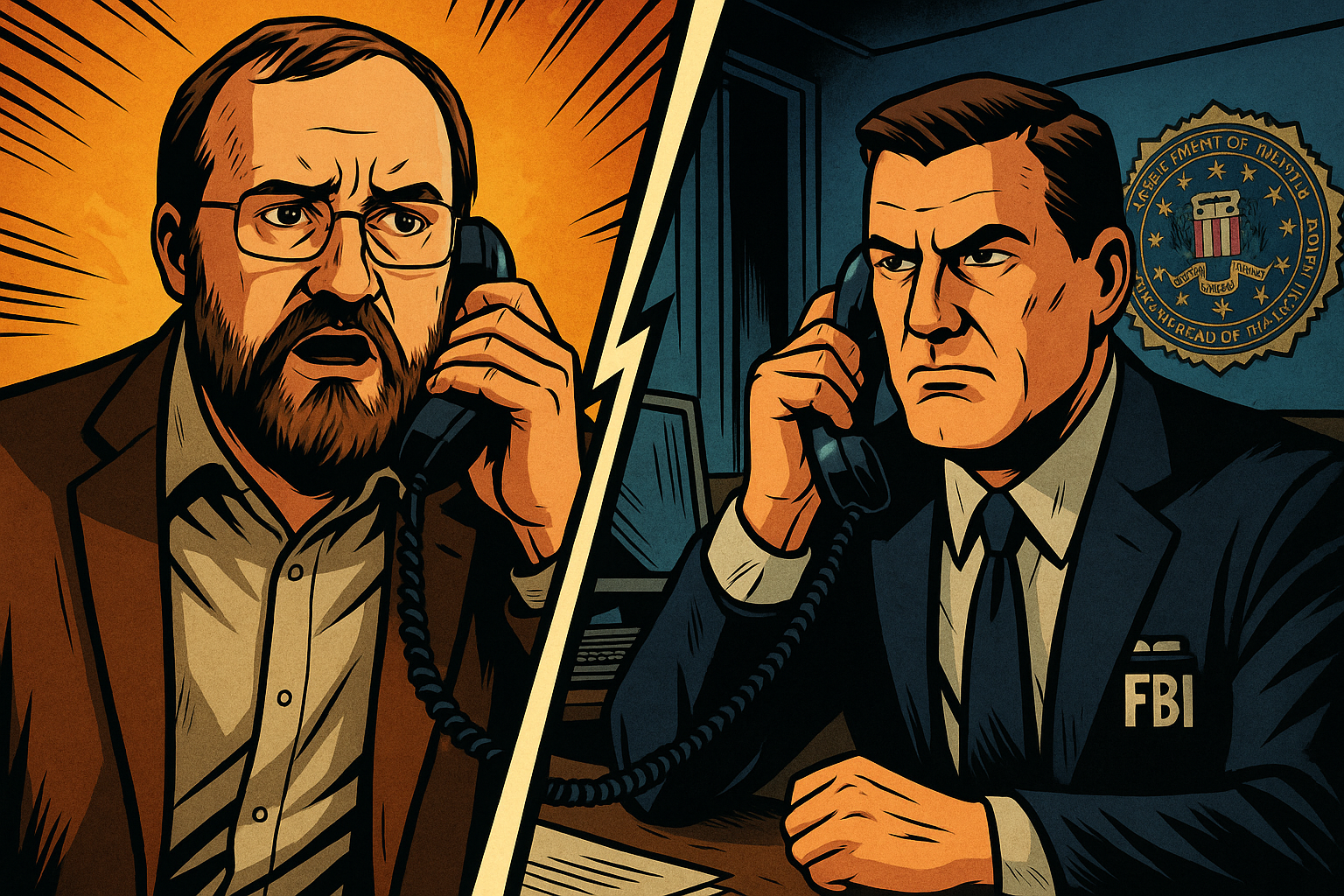
The blockchain world was shaken when Cardano suffered a temporary yet dramatic chain split on November 21, caused by a malformed delegation transaction that exploited a bug dating back to 2022. The culprit, a staking‑pool operator working under the alias “Homer J.,” later admitted the incident began as a personal challenge — he tried to reproduce a “bad transaction,” used AI‑generated instructions and inadvertently triggered a divergence in ledger history.
What happened on the chain
The split emerged when a delegation transaction passed validation in older node versions but was rejected by newer one, causing network nodes to diverge into two incompatible chains. Block production never stopped, yet exchanges paused operations amid the confusion. Emergency patches were deployed within three hours and the system converged back to a single chain by the next day. No user funds are reported lost so far.
Hoskinson’s response and legal implications
Charles Hoskinson described the incident as a “premeditated attack” rather than a simple error and confirmed that the U.S. Federal Bureau of Investigation is investigating the matter. He asserted that the operator “knows the FBI is already involved.” Meanwhile an employee of IOHK, Cardano’s lead development organisation, publicly resigned citing concerns about future legal consequences for development mistakes.
Market and ecosystem impact
In the immediate aftermath the native token ADA dropped by as much as 16 percent before stabilising. The broader narrative now hinges on governance trust, code‑audit rigour and the growing risk that even mature proof‑of‑stake networks can be shaken by obscure legacy bugs. The debate encapsulates one of crypto’s defining tensions: decentralisation versus operational risk.
What to monitor next
Attention will focus on whether Cardano can restore stakeholder confidence and sharpen its node‑software deployment processes. Will staking‑pool‑operators upgrade swiftly to the patched version? Will governance transparency improve? Also, regulators may begin paying closer attention to blockchain network incidents being treated as cyber‑attacks. And for ADA holders and developers, the key question remains whether network resilience can outpace reputational damage.
Cardano
The Homer J Incident: A Malformed Transaction Shakes Cardano and Sparks Debate on Accountability

In the fast-paced world of blockchain technology, where innovation often collides with unforeseen vulnerabilities, the Cardano network faced a rare and disruptive challenge on November 21, 2025. A single, seemingly innocuous transaction triggered a temporary fork in the blockchain, halting progress for hours and sending ripples of concern through the cryptocurrency community. At the center of this episode is Homer J, a vocal figure in the Cardano ecosystem, who publicly confessed to submitting the problematic transaction. The incident not only tested the resilience of Cardano’s architecture but also ignited fierce discussions about responsibility, security, and the appropriate response to such disruptions.
The Incident: A Fork Born from a Faulty Delegation
Cardano, known for its rigorous academic approach to blockchain design, operates on a proof-of-stake consensus mechanism called Ouroboros. This system relies on stake pool operators (SPOs) to validate and propagate transactions across the network. On the evening of November 21, a delegation transaction—intended to shift staking rights from one wallet to another—entered the system with a critical flaw: a malformed format that created a validation mismatch.
In blockchain terms, a fork occurs when nodes in the network disagree on the validity of a block or transaction, leading to two diverging versions of the chain. Here, the “poisoned” transaction caused some nodes to accept it as valid, while others rejected it outright due to the error. This split the chain temporarily, freezing transaction confirmations and explorer updates for several hours. Users reported stalled transfers, delayed staking rewards, and a palpable sense of uncertainty as the network appeared to grind to a halt.
Importantly, no user funds were lost in the process. Cardano’s extended unspent transaction output (eUTXO) model, which isolates transactions to prevent cascading failures, played a key role in containing the damage. Developers and SPOs quickly coordinated a rollback on the affected nodes, syncing them back to the valid chain. The entire resolution unfolded within a single day, showcasing the network’s built-in safeguards against prolonged disruptions.
This was not a sophisticated 51% attack or a theft exploiting smart contract vulnerabilities—common plagues in other ecosystems like Ethereum’s account-based model. Instead, it was a low-level error in transaction formatting that exploited a subtle edge case in Cardano’s validation logic. While the blockchain forked, it did not “break” in the catastrophic sense; the design’s determinism and atomicity ensured that invalid states could be identified and discarded without compromising the core ledger.
Homer J’s Confession: From Experiment to Ecosystem Threat
Hours after the fork became public, Homer J, a longtime Cardano enthusiast with a history of candid commentary on the project’s developments, stepped forward with a remorseful admission. In a detailed post, he explained that the incident stemmed from a personal “challenge” to reproduce a previously identified bad transaction. What began as curiosity escalated into carelessness: a sequence of actions that injected the malformed delegation into the live network.”I know the word isn’t enough given the impact of my actions,” Homer J wrote, emphasizing that he acted alone, without coordination or financial motive. He explicitly stated he neither sold nor shorted ADA tokens during the disruption and expressed deep shame over the “oh shit” moment when he realized the explorer had frozen. Acknowledging his failure to alert the community sooner or assist more actively in the aftermath, he issued an unreserved apology to the “Cardano family.”Homer J’s transparency was both praised and scrutinized. As a known voice in discussions around Cardano’s governance and security—often critical yet constructive—his involvement added a layer of irony. Some viewed it as an unfortunate accident by an insider gone awry; others saw it as reckless endangerment, especially amid a broader market downturn where ADA prices dipped, amplifying perceived losses for traders and stakers.
Charles Hoskinson’s Response: Praise, Pursuit, and the FBI Question
Cardano’s co-founder, Charles Hoskinson, wasted no time in addressing the crisis. Initially framing it as a “premeditated attack” from a disgruntled stake pool operator, he highlighted the rapid response: “Cardano works so fast that we forked, fixed, and caught the guy all in one day.” Once Homer J’s confession emerged, Hoskinson’s tone shifted to commendation for the network’s robustness. He lauded the eUTXO model’s isolation of failures, contrasting it with the frequent exploits in account-based chains, and noted how the incident ultimately validated Cardano’s security-first philosophy.
Yet, Hoskinson’s reaction extended beyond technical admiration. In a pointed statement, he indicated plans to involve the Federal Bureau of Investigation (FBI) in probing the matter. Describing Homer J’s actions as a deliberate risk to the ecosystem—especially given the timing during a volatile market—he argued that such disruptions warranted federal scrutiny to deter future threats. “The network survived, it didn’t stop, and ultimately, the attack failed,” Hoskinson affirmed, but he underscored that accountability must transcend apologies.
This escalation drew immediate backlash and support in equal measure. Critics questioned whether summoning the FBI for a non-financial disruption crossed into overreach, while proponents argued it signaled Cardano’s maturity as a serious financial infrastructure.
Community Backlash: Resilience Meets Reckoning
The Cardano community, renowned for its engaged and decentralized ethos, erupted in a spectrum of reactions. On one end, users celebrated the swift recovery as a testament to the project’s engineering prowess. “I was genuinely impressed by how strong and proactive the Cardano community can be,” one participant noted, crediting real-time information sharing among developers, SPOs, and enthusiasts for minimizing chaos. Others echoed this, viewing the fork as a “stress test” that exposed and fortified weaknesses without lasting harm.
However, frustration simmered beneath the surface. Many decried the incident’s timing, coinciding with a market dump that exacerbated ADA’s price volatility and eroded trust among newcomers. “Homer f¥€ked a lot of people… Negligence and malice can easily be proven here. Mf needs to go to jail and likely many lawsuits coming his way,” vented one stakeholder, highlighting potential civil claims for indirect losses. Calls for stricter validation protocols and peer-reviewed transaction simulations grew louder, with some questioning how such a basic error evaded Cardano’s vaunted formal methods.
Defenders of Homer J urged restraint, portraying him as a “straight shooter” whose intent was exploratory rather than destructive. “Public castigation… is not the right approach,” argued a supporter, advocating focus on prevention over punishment. Broader discourse touched on “Code is Law” principles: Should blockchains self-regulate through immutability, or do real-world legal tools like investigations bridge the gap? The consensus leaned toward evolution—using the event to harden defenses against spam or malformed inputs—while affirming Cardano’s superiority over hack-prone rivals.
Overreaction or Necessary Deterrence? Weighing the FBI’s Role
At its core, Homer J’s submission was a malicious transaction in intent if not outcome: a deliberate injection of invalid data that could have escalated into broader instability. Cardano’s fork was contained, but in a live financial network handling billions in staked value, the stakes are existential. Disruptions like this echo DDoS-style spam attacks on other chains, where even brief halts invite exploits or flight of capital.
Calling in the FBI, however, teeters on the edge of overreaction for what Homer J framed as a solo blunder without theft or coordination. No lives were ruined, no wallets drained—unlike the $128 million Balancer exploit days prior, which ravaged multiple chains without similar law enforcement saber-rattling. Blockchain’s pseudonymous nature already complicates enforcement; pursuing one individual’s IP or wallet traces might yield little beyond a cautionary tale, potentially alienating contributors in an open-source ecosystem.
That said, Hoskinson’s stance isn’t baseless. As Cardano eyes institutional adoption, treating careless actions as felonies sets a precedent against bad actors. A strong door on your house doesn’t excuse someone ramming it—legal recourse reinforces technical resilience. Ultimately, this incident underscores a maturing tension: Blockchains must balance unforgiving code with human accountability. For Cardano, it was a fork in the road, not the end of the chain, but one that demands smarter safeguards to prevent lone wolves from howling at the moon.
-

 Cardano2 months ago
Cardano2 months agoCardano Breaks Ground in India: Trivolve Tech Launches Blockchain Forensic System on Mainnet
-

 Cardano2 months ago
Cardano2 months agoCardano Reboots: What the Foundation’s New Roadmap Means for the Blockchain Race
-

 Bitcoin2 months ago
Bitcoin2 months agoQuantum Timebomb: Is Bitcoin’s Foundation About to Crack?
-

 Cardano2 months ago
Cardano2 months agoAfter the Smoke Clears: Cardano, Vouchers, and the Vindication of Charles Hoskinson
-

 Cardano2 months ago
Cardano2 months agoMidnight and Google Cloud Join Forces to Power Privacy‑First Blockchain Infrastructure
-

 Ripple2 months ago
Ripple2 months agoRipple CTO David “JoelKatz” Schwartz to Step Down by Year’s End, but Will Remain on Board
-

 News2 months ago
News2 months agoRipple’s DeFi Awakening: How mXRP Is Redefining the Role of XRP
-
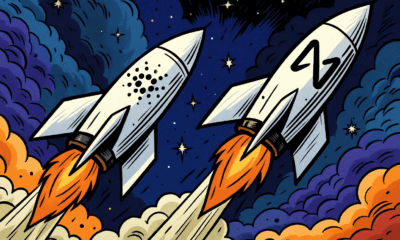
 Altcoins2 months ago
Altcoins2 months agoNEAR and Cardano Forge a New Cross‑Chain Alliance: What It Means for ADA and Web3 Interoperability







